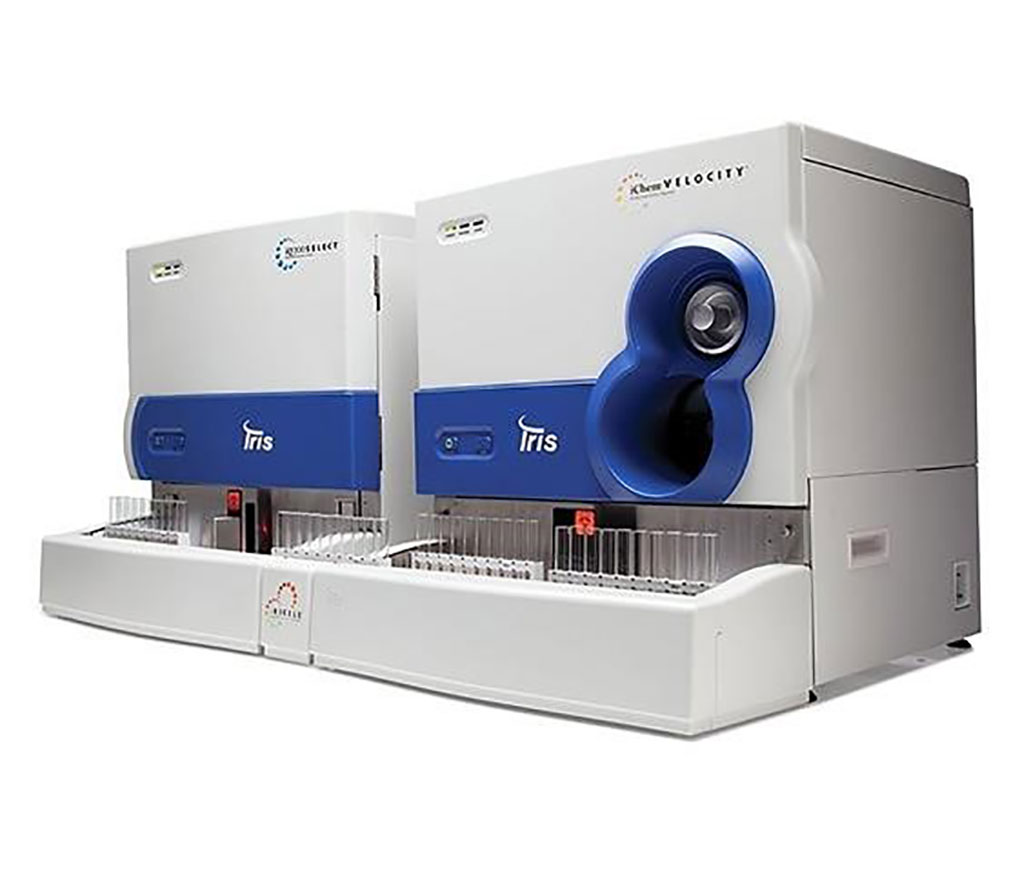Three Automated Urine Analyzers Compared with Manual Microscopic Urinalysis
By LabMedica International staff writers
Posted on 03 Mar 2021
Urinalysis is an essential screening test in clinical laboratories in order to diagnose and plan treatment for urinary tract infections, kidney disease and diabetes. Urinalysis includes visual examination, evaluation of chemical parameters and microscopic examination. Posted on 03 Mar 2021
Microscopic examination is fundamental to urine analysis. This is a simple way to collect informative data, but it is also labor-intensive, time-consuming, and requires experienced staff for accurate results and interpretation. Several automated urine analyzers have been introduced for urine analysis in medical laboratories.

Image: The iRICELL series combines urine chemistry and microscopy in a fully automated, walk-away workcell that is easy to use and maintain and optimizes and advances urinalysis and body fluid testing (Photo courtesy of Beckman Coulter).
Clinical Medical Laboratorians at the Prince of Songkla University (Songkhla, Thailand) collected fresh 100 urine samples in preservative-free containers and transferred to four different test tubes for three automated urine analyzers without centrifuging and manual microscopy by three experienced medical technologists, independently using the same microscope slide.
The scientists assessed and compared the performance of the most common three automated urine analyzers: Cobas 6500 (Roche Diagnostics, Indianapolis, IN, USA); UN3000-111b (Sysmex Corporation, Kobe, Japan); and iRICELL 3000 (Beckman Coulter, Brea, CA, USA). The Cobas 6500 is a combination of two analyzers including the Cobas u601 which analyzes physical and chemical components, and the Cobas u701 which performs microscopic examinations. The UN3000-111b has two component analyzers in a single platform including a chemical component (UC-3500 analyzer) for analyzing the physical and chemical parts of urine and a fluorescence flow cytometry component (UF-5000 analyzer) for microscopic examination of sediments. The iRICELL 3000 is a combination of two component analyzers including a chemical component (iChemVELOCITY) and a microscopic examination component (iQ200).
The medical laboratorians reported that there was good correlation of urine physical and chemical analyses between the three analyzers with an overall concordance level of more than 80%. For sediment analysis, the degree of concordance between manual analysis and the three instruments was very good to good for white blood cells, red blood cells and epithelial cells, and moderate for bacteria. There were fair to good agreements between manual microscopy and the three instruments, Cobas 6500, UN3000-111b and iRICELL 3000, for casts (Cohen’s kappa 0.42, 0.38 and 0.62, respectively).
The authors concluded that the three automated urine analyzers showed similar performances and good correlation with manual microscopy. The results of this study indicate that automated urine analyzers could be used for initial urine testing to reduce high workloads and to save time, but manual microscopic analysis by experienced staff is still necessary to classify urine sediments for confirmation, especially in pathologic specimens. The study was published in the March, 2021 issue of the journal Practical Laboratory Medicine.
Related Links:
Prince of Songkla University
Roche Diagnostics
Sysmex Corporation
Beckman Coulter














